77 F. high in the Twin Cities Tuesday.
84 F. average high on July 8.
89 F. high on July 8, 2013.
-20 F. Temperatures by next Tuesday and Wednesday may be 15-20 degrees cooler than average for mid-July.
Weather Adventures
It's
all in your mind. If you tell yourself you're miserable - chances are
you will be. I prefer a glass-half-full approach. Yes, our weather is
increasingly volatile. There are many days Mother Nature seems intent on
murdering us in our sleep. But isn't this fun!
Cue the crickets.
Kari
Kennedy is a producer at TPT's "Almanac" program. She's been canoeing
up north and has seen it all in 2014: a heat wave just days after
ice-out, no June campfires because of monsoon rains, yet she's heading
back for more. "We only had pea-sized hail on our canoe trip so we
managed OK!" It’s always an adventure to live here in Minnesota" she
e-mailed me. That's the right attitude to have living in The Superbowl
of Weather, Land of 10,000 Weather Atrocities.
Nothing violent is
brewing, although more T-storms flare up Friday, again Sunday PM hours.
Saturday still looks like the better day of the weekend for outdoor fun.
We're
heading into what is historically the hottest 2 weeks of the year, so
don't take 70s for granted today. Next week's cool frontal passage looks
like something out of late September. Highs in the 60s by Tuesday &
Wednesday?
Hey, it's not a Canadian Smack. Think of this as free A/C. And a break from the bugs, I pray.
An Early Autumn?
I should censor myself - of course there's PLENTY of summer left, but
next week we get a premature taste of late September. By midweek
temperatures dip into the 50s, even some 40s outside the Twin Cities
metro, with highs in the 60s to near 70 F. by Tuesday. But first we warm
up into the 80s this weekend; the best chance of T-storms early Friday,
again Sunday PM hours. Dew points peak in the mid to upper 60s this
weekend before dropping off dramatically next week. Source:
Weatherspark.
Temperature Departures.
By next Tuesday morning at 12z temperature anomalies may be as much as
20 F. cooler than average for mid-July from the eastern Dakotas into
western Wisconsin. Light jackets and sweatshirts during what is,
historically, the hottest week of summer? The jet stream is still
unusually erratic for mid summer. Source: Weather Bell.
A July Polar Vortex.
Why not? Nothing much surprises me any more. No wait, a raging blizzard
in mid-July would shock me, otherwise I'm becoming numb to crazy
extremes and climate volatility. NOAA CPC shows a huge temperature
imbalance next week: record heat out west, with potentially
record-setting chill from the Upper Mississippi Valley into the Great
Lakes. Source:
HAMweather.
Another Sloppy Warm Front.
The squall line that produced wind damage across New York state and
Pennsylvania yesterday (straight-line winds gusting over 70 mph in some
towns) sails out into the Atlantic with clearing skies from the Great
Lakes to New England. Meanwhile the next warm front pushes heavy
T-storms across the Midwest Thursday night and Friday, setting the stage
for low to mid 80s this weekend. Enjoy the warmth; a big cool-down
arrives next week. 84 hour NAM Future Radar: NOAA and HAMweather.
Storm Chasers Fight Accusations of Bad Behavior as "Chasertainment" Comes of Age.
As is often the case, a few bad apples make it harder on everyone else
who is trying to be responsible and do the right thing. Here's an
excerpt from an interesting story at
Examiner about the proliferation of storm chasing in the age of Twitter and increased competition to hit Media Gold: "...
Well-respected storm chaser
and research meteorologist Chuck Doswell wrote in his blog following
the Pilger tragedy: “Storm chasing is being flooded with a large
infusion of folks out there chasing that are, as my friend (deleted
name) says, mostly about themselves and not so much about the storms.
‘Look at me!’ they shout. ‘I'm special because I chase storms
[stupidly!].’ They thumb their noses at the very notion of chasers being
responsible to others. They wallow in their uncaring “outlaw’’ status,
joyful as a pig in a mud puddle when they get publicity for their
"exploits..."
Why Hurricane Arthur is a Weather Forecaster's Worst Nightmare.
Models do a pretty good job with hurricane tracks, but predicting
intensity at landfall is another challenge altogether. The nightmare
scenario: a tropical storm or Category 1 hurricane that blows up into a
Category 4 overnight, leaving little time for people to evacuate
vulnerable barrier islands. Here's an excerpt of a
Mashable story from Andrew Freedman: "...
Storms
like this instill fear in the hearts of hurricane forecasters because
they spotlight how — despite satellites, radars, "hurricane hunter"
aircraft and their legion of dropsondes,
and other technological wizardry — the puzzle of what makes such storms
rapidly intensify remains a mystery. And more so in this case than in
others, so does how to solve the challenge of communicating to the
public what all of the implications of forecast uncertainty are..."
Five Beautiful GIFS of Hurricane Arthur Show Nature's Terrifying Power.
Gawker has an interesting article with some terrific graphics; here's the intro: "
When
Hurricane Arthur made landfall on the North Carolina coast last
weekend, it was the strongest hurricane to strike the United States
since Hurricane Ike hit Texas in 2008. The storm was downright
impressive visually, and these gifs document the latent beauty of
nature's power. The top image shows the wind movement in the hurricane
using streamlines shown using "earth" on nullschool.net.
The website is actually really interesting, offering users the ability
to overlay atmospheric winds (from the upper-levels to the surface),
temperatures, moisture, and pressure to show the true interconnectivity
of the global atmosphere..."
What Do Scientists Think Was Trapped In Hurricane Arthur Off The Carolina Coast? With Dual Polarization Doppler radar we're seeing things we never saw before; here's an excerpt of an interesting story at
WSPA.com: "
Scientists
have captured images of Hurricane Arthur just off the NC coast that
show what they believe is a huge flock of birds caught in the eye of the
storm. The severe weather and radar research group at the University of
Alabama at Huntsville has studied various radar images from last week’s
storm. They also followed reports of birds appearing in odd places in
the US after the storm..."
Image credit: "
Radar of Arthur from National Weather Service."
Bird Notes. Hurricane Arthur Brought Unusual Birds Up North Carolina Coast.
Trapped in the relatively calm eye and then deposited over North
Carolina - thousands of birds caught a free (and harrowing) ride from
Arthur. Here's a clip from
MyrtleBeachOnline.com: "...
While
the passage of tropical storms or hurricanes often leaves unusual
seabirds in their wake, such was not the case with the passage of Arthur
in the Myrtle Beach area last week. However, a few miles up the coast
at Wrightsville Beach, N.C., a Leach’s storm-petrel was serendipitously
photographed and a sooty tern observed. Farther north, a magnificent
frigatebird was observed at Beaufort, N.C., while a bridled tern was
seen at Lake Mattamuskeet, N.C., a sooty tern at Nags Head, N.C., and a
dead great shearwater at Topsail Beach, N.C..."
Photo credit above: "
Painted buntings continue to visit feeders at Huntington Beach State Park’s Nature Center." By Gary Phillips - for The Sun News.
Five Hazardous Weather Myths Debunked.
AccuWeather
has an interesting story, focusing on weather-related myths. Here's an
excerpt, answering the question: Is humid air heavier than dry air? "
Dry
air is actually heavier than humid air, AccuWeather.com Senior
Meteorologist Steve Wistar said. There are more molecules of water in
humid air which are lighter than molecules of air, he said. "You can
really feel the presence of humid air, but it is less dense," he said.
An airliner will need a larger runway length in dry air because there is
more air resistance, and a baseball will go farther in humid air..."
Defeating The Downburst: 20 Years Since The Last U.S. Commercial Jet Accident from Wind Shear.
The threat of rapidly shifting winds in the vicinity of airport runways
has been well documented for some time; new high-resolution Doppler
capabilities and onboard radar can help pilots avoid the most dangerous
forms of turbulence during take-off and approach. Here's a clip of of a
good explanation and perspective from meteorologist Mike Smith, writing
for
The Washington Post: "...
Downburst-driven
wind shear, for many years, was the leading cause of airline accidents.
Not listed above was a near-miss involving Air Force One carrying
President Reagan. A downburst occurred immediately after it landed at
Andrews Air Force Base in August, 1983. The airfield anemometer (wind
speed instrument) clocked a peak gust of 150 mph. That such a close call
involving Air Force One could occur was evidence of the deep skepticism
involving Dr. Fujita’s hypothesis..." (Image credit: NOAA).
Who Turned Out The Lights? The Coming Mega Sun Storm.
It's usually the stuff you're not expecting and not planning for that
bites you in the butt, along with a "cascade of unintended
consequences".
Bloomberg Businessweek takes a look at what an X-Class solar flare could do to the grid and communications; here's an excerpt: "...
A
2008 report published by the National Academy of Sciences drew
attention to the risks. It cited Kappenman’s earlier work, which said a
severe storm could disable hundreds of the U.S. grid’s high-voltage
transformers, leaving more than 130 million people in the dark for
months. The reinsurance industry has recently begun to raise concerns
about the fallout from a major sun storm. A 2013 report by Lloyd’s of
London warned that such an event could, among other things, disrupt
financial markets, food supplies, transportation systems, and hospital
services at an economic cost of as much as $2.6 trillion..."
During Natural Disasters, Hospitals Must Bounce Back, Health Officials Say. Resilience won't be optional for most businesses, including first responders and hospitals. Here's a clip from a story at
jacksonville.com: "...
Members
of the American Meteorological Society, or AMS, have recently added
their concerns about hospital resilience in the aftermath of
“high-impact” weather events throughout the country. The meteorological
society suggestions include having medical centers look at their
structural designs and, in some cases, relocate critical components to
higher ground. When Katrina left large stretches of low-lying New
Orleans submerged for weeks, it demonstrated the importance of having
facilities that remain functional and accessible..."
Read
more here:
http://www.myrtlebeachonline.com/2014/07/08/4341183/bird-notes-hurricane-arthur-brought.html?sp=/99/123/#storylink=cpy
Read
more here:
http://www.myrtlebeachonline.com/2014/07/08/4341183/bird-notes-hurricane-arthur-brought.html?sp=/99/123/#storylink=cpy
A Correction Is Coming.
Predicting the future is challenging, from weather to world events to
inevitable economic downturns. Here's an excerpt from one of my favorite
financial writers, Barry Ritholtz, at
Bloomberg View: "...
As we have detailed far too many times, people are terrible at making predictions. You draw conclusions from a single data point. You don’t know what the economy is going to do, or where interest rates are going. You can't even forecast your own behavior. Forecasting the stock market
is even harder. Yet people constantly try to time the market, pick the
exact points to jump in and out. No one does this especially well, and
that is before we consider costs and taxes..."
Photo credit: "
That's a lot of red." Photographer: Dario Pignatelli - Bloomberg.
Welcome to the Everything Boom, or Maybe the Everything Bubble. Neil Irwin at
The New York Times takes a look at how prices for nearly everything are going up; here's a clip: "...
Welcome
to the Everything Boom — and, quite possibly, the Everything Bubble.
Around the world, nearly every asset class is expensive by historical
standards. Stocks and bonds; emerging markets and advanced economies;
urban office towers and Iowa farmland; you name it, and it is trading at
prices that are high by historical standards relative to fundamentals.
The inverse of that is relatively low returns for investors..."
Photo credit above: Richard Drew/Associated Press.
Uber's Brilliant Strategy to Make Itself Too Big To Ban.
Wired
has a fascinating look at how Uber may be following the Amazon model:
be not afraid to lose money in the short term if you can gain market
share quickly; here's a clip: "...
Consider
Uber’s kinship with Amazon. The comparison isn’t obvious at first,
since Uber doesn’t sell goods, just a service. But their stories are
similar. A startup led by a brash, charismatic CEO catches a creaky old
industry unaware. It grows quickly, and its popularity explodes as its
brand becomes nearly synonymous with the disruptive service it’s
offering. Amazon grew—and is still growing— because it’s not afraid to
lose money. Low prices and free shipping deals eat away at
profitability, but they also keep customers coming back..." (Image credit: Uber).
For Taylor Swift, The Future of Music is a Love Story.
You don't have to love Taylor Swift's music to appreciate her take on
the industry she adores, and some of the jaw-dropping trends in recent
years. It's harder than ever to be a working musician, without having
that part-time barista gig. Here's an excerpt from an interesting
Wall Street Journal article: "..
Music
is art, and art is important and rare. Important, rare things are
valuable. Valuable things should be paid for. It's my opinion that music
should not be free, and my prediction is that individual artists and
their labels will someday decide what an album's price point is. I hope
they don't underestimate themselves or undervalue their art..."
TODAY: Comfortable sunshine. Dew point: 53. Winds: NW 10. High: 77
WEDNESDAY NIGHT: Mostly clear and cool. Low: 59
THURSDAY: Clouds increase, T-storms at night. High: 81
FRIDAY: Few T-storms, some heavy. Wake-up: 65. High: near 80
SATURDAY: Partly sunny, the nicer day. Wake-up: 68. High: 83
SUNDAY: Early sun. PM Showers, T-storms. Wake-up: 67. High: 82
MONDAY: Mix of clouds and sun, much cooler. Wake-up: 57. High: 74
TUESDAY: Sunny and cool. Who turned off the heat?. Wake-up: 55. High: 70
Climate Stories...
Changing Antarctic Winds Could Accelerate Sea Level Rise. We
don't know what we don't know, but the scientific method is shedding
new light on how complex systems, like Antarctic ice, react with
increasingly warm water (and changing wind currents aloft). Here's an
excerpt from
Science 2.0: "
Changes
to Antarctic winds have been implicated in southern Australia's drying
climate but a new estimate says they may also have a profound impact on
warming ocean temperatures under the ice shelves along the coastline of
West and East Antarctic. Projected changes in the winds circling the
Antarctic may accelerate global sea level rise significantly more than
previously believed. Most sea level rise studies focused on the rate of
ice shelf melting due to the general warming of the ocean over large
areas..."

Climate Change Hits America in the Gut.
What worked yesterday may not work tomorrow, especially as water
supplies become increasingly stressed by weather-whiplash, oscillating
back and forth between flood and drought. Here's an excerpt from The
Daily Climate and
The Jackson Free Press: "...
Corn,
the biggest U.S. agricultural crop by far, is at risk because its
thirst for water is growing at a time when the threat of drought is
increasing, the report says. Ceres said corn production especially is
imperiled by its reliance on stressed aquifers—in particular, the High
Plains aquifer that spans eight Great Plains states and California's
over-extended Central Valley aquifer. "Escalating corn production for
our food, livestock and energy industries has put the corn sector on an
unsustainable path," said report author Brooke Barton, water program
director at Ceres. Even though just one-fifth of the U.S. corn crop is
irrigated, water demand has grown as overall corn production has
skyrocketed. Barton said 87 percent of U.S. production is in
water-stressed areas..."
(File photo: Jim Reed, Corbis).
Blueprints for Taming the Climate Crisis.
How might a cleaner energy future unfold, and would it be as expensive
as critics assert? Here's the introduction to a story at
The New York Times: "
Here’s
what your future will look like if we are to have a shot at preventing
devastating climate change. Within about 15 years every new car sold in
the United States will be electric. In fact, by midcentury more than
half of the American economy will run on electricity. Up to 60 percent
of power might come from nuclear sources. And coal’s footprint will
shrink drastically, perhaps even disappear from the power supply..."
How To Convince a Republican: Use a Pie Chart! If only it were that simple. Here's a clip from a story at
Mother Jones: "...
The strategy has its critics,
including Yale science communication researcher Dan Kahan, who contends
that the approach will backfire among conservative ideologues. A new study
just out in the journal Climatic Change, however, suggests not only
that the "97 percent consensus" message can be effective, but that it
will work best when expressed in the form of a simple phrase or (eat
your heart out, USA Today) a pie chart. Like this one, which is an
actual image designed to spread the "97 percent" message..."
Image credit above:
SkepticalScience.com
Global Warming Skeptics Seek Own Documentary, 8 Years after "Inconvenient Truth".
It's prudent to be skeptical (about everything), but heavily financed,
manufactured doubt? Here's an excerpt of an Andrew Freedman article at
Mashable: "
Eight
years after Al Gore's Academy Award-winning climate-science
documentary, An Inconvenient Truth, a prominent climate-skeptic group
announced a crowdfunding initiative
on Tuesday to produce a documentary that will provide their perspective
on the issue. Of course, nearly the entire climate-science community
disagrees with this perspective. The Committee for a Constructive
Tomorrow (CFACT), a conservative group, announced its filmmaking
endeavor in Las Vegas at an annual meeting of global-warming skeptics,
which is being hosted by libertarian group The Heartland Institute. The
conference began Monday, and ends on Wednesday..."
Photo credit above: "
The coal-fired Plant Scherer is shown in operation early Sunday, June 1, 2014, in Juliette, Georgia." Image: John Amis/Associated Press.
Most Popular Climate Denial "Arguments". For the complete list and details click over to
Skeptical Science.
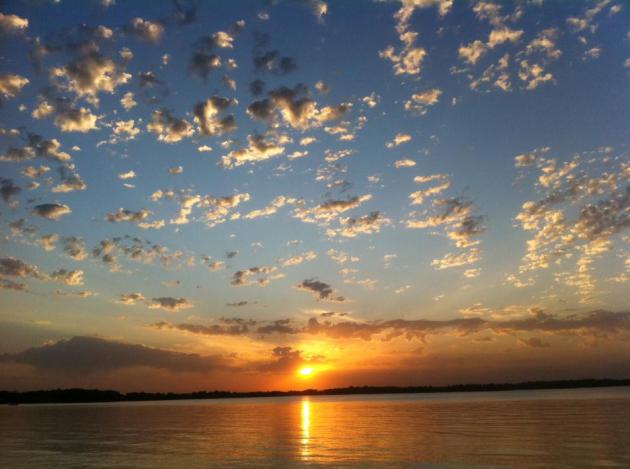
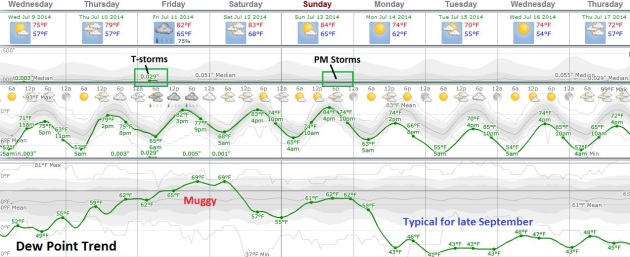
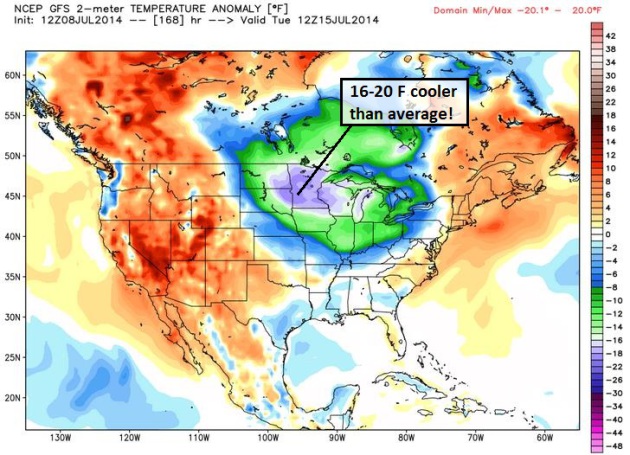
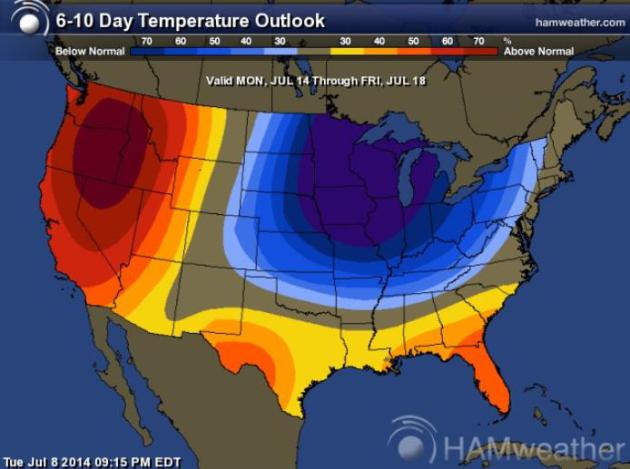
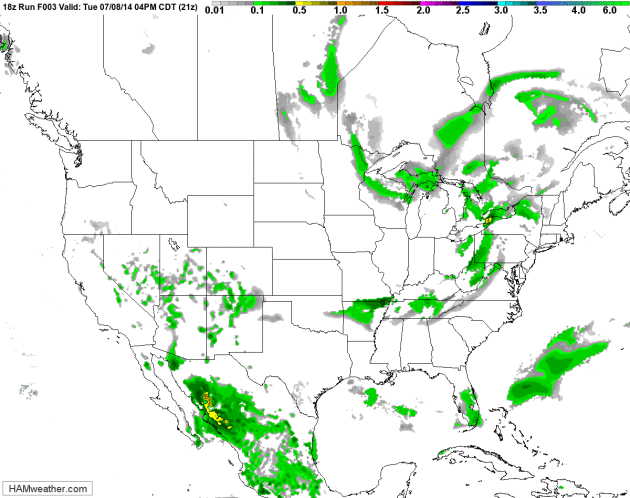
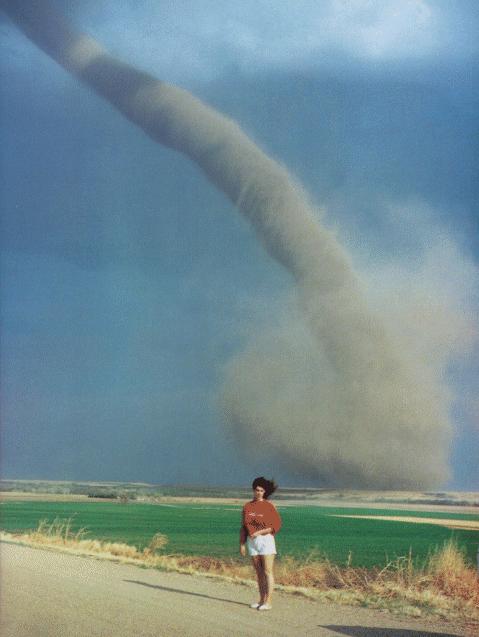
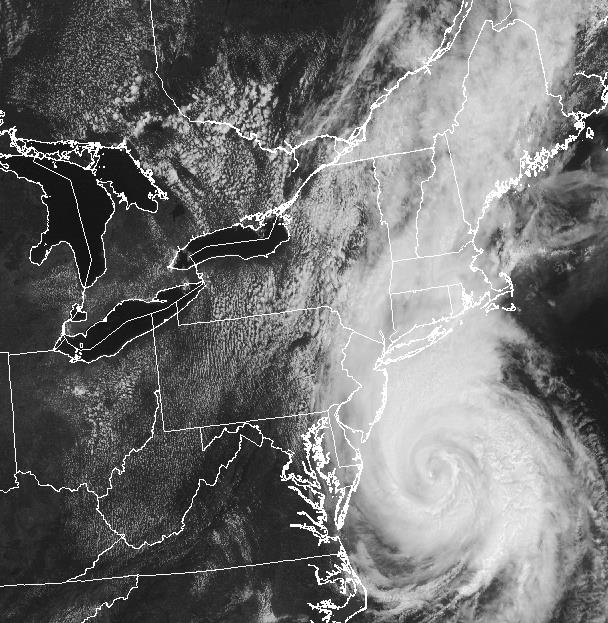



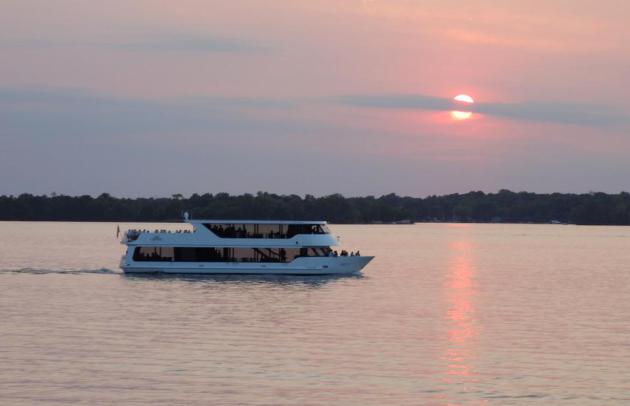

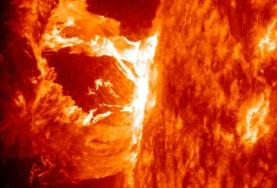






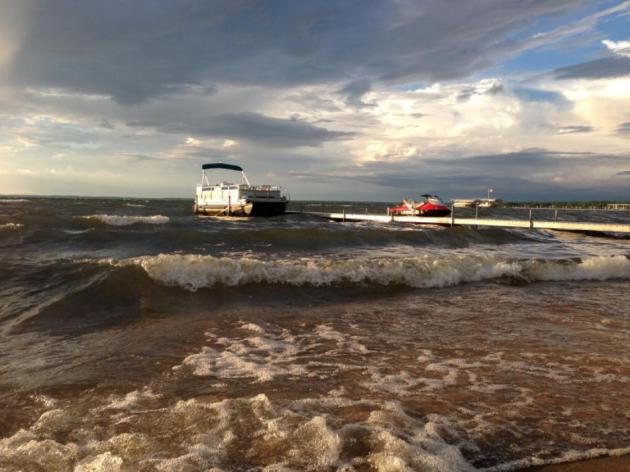
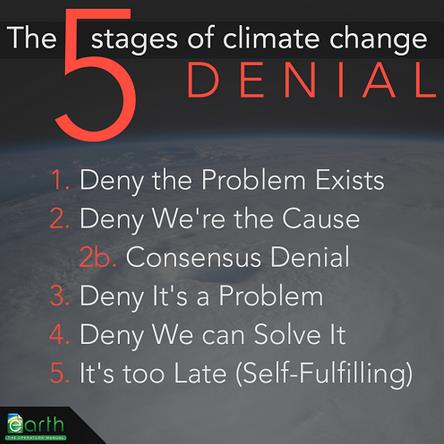




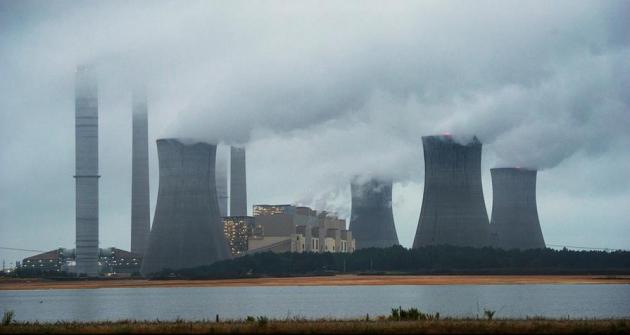
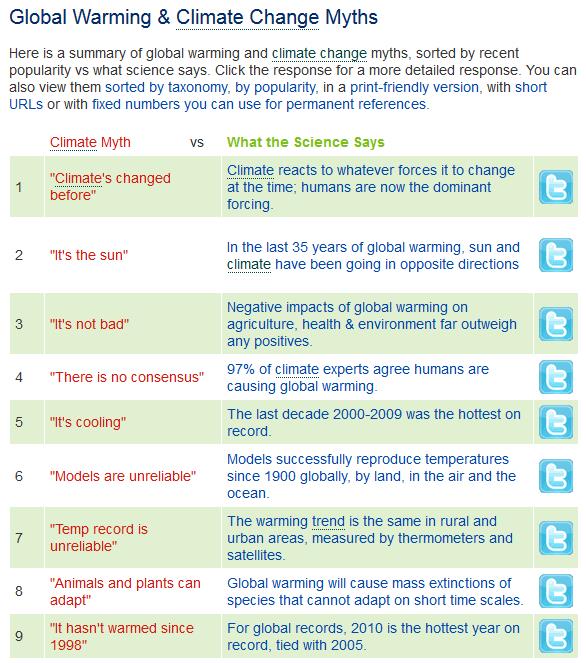
No comments:
Post a Comment